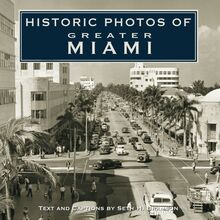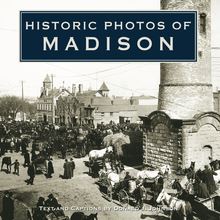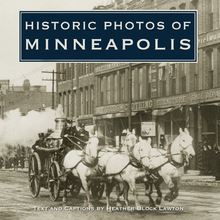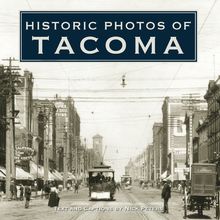Historic Photos of Indianapolis , livre ebook
168
pages
English
Ebooks
2006
Vous pourrez modifier la taille du texte de cet ouvrage
Obtenez un accès à la bibliothèque pour le consulter en ligne En savoir plus
Découvre YouScribe en t'inscrivant gratuitement
Découvre YouScribe en t'inscrivant gratuitement
168
pages
English
Ebooks
2006
Vous pourrez modifier la taille du texte de cet ouvrage
Obtenez un accès à la bibliothèque pour le consulter en ligne En savoir plus
Publié par
Date de parution
01 septembre 2006
Nombre de lectures
3
EAN13
9781618586421
Langue
English
Poids de l'ouvrage
10 Mo
Publié par
Date de parution
01 septembre 2006
Nombre de lectures
3
EAN13
9781618586421
Langue
English
Poids de l'ouvrage
10 Mo
HISTORIC PHOTOS OF
INDIANAPOLIS
Noon hour at an Indianapolis meatpacking house, 1908. Kingan and Company, located at Maryland and Blackford Streets along the White River, was the city s largest meatpacking plant. Lewis Hine, who traveled around the country documenting child laborers, visited Indianapolis in August 1908 and likely took this photo there.
HISTORIC PHOTOS OF
INDIANAPOLIS
Turner Publishing Company
200 4th Avenue North Suite 950
Nashville, Tennessee 37219
(615) 255-2665
412 Broadway P.O. Box 3101
Paducah, Kentucky 42002-3101
(270) 443-0121
www.turnerpublishing.com
Copyright 2006
This book or any part thereof may not be reproduced or transmitted in any form or by any means, electronic or mechanical, including photocopying, recording, or by any information storage and retrieval system, without permission in writing from the publisher.
Library of Congress Control Number: 2006905290
ISBN: 1-59652-253-4
Printed in the United States of America
0 9 8 7 6 5 4 3 2 1
C ONTENTS
A CKNOWLEDGMENTS
P REFACE
O UT OF THE W ILDERNESS
M ONUMENTAL C ELEBRATIONS
H ARD H EARTS , H ARD T IMES
T HE C ITY AT A C ROSSROADS
N OTES ON THE P HOTOGRAPHS
Washington Street, looking east from the intersection of Pennsylvania Street and Virginia Avenue, circa 1920
A CKNOWLEDGMENTS
This volume, Historic Photos of Indianapolis, is the result of the cooperation and efforts of several individuals, organizations, institutions, and corporations. It is with great thanks that we acknowledge the valuable contribution of the following for their generous support.
Buchanan Group
Indiana State Library
Indiana Historical Society
Indiana Power and Light
Library of Congress
We would also like to express our gratitude to Marcia Caudell, Joan Hostetler, Susan Sutton, and Elizabeth Wilkinson for providing research and assisting the author.
P REFACE
Indianapolis has thousands of historic photographs that reside in archives, both locally and nationally. This book began with the observation that, while those photographs are of great interest to many, often they are not easily accessible. During a time when Indianapolis is looking ahead and evaluating its future course, many people are asking, How do we treat the past? These decisions affect every aspect of the city-architecture, public spaces, commerce, tourism, recreation, and infrastructure-and these, in turn, affect the way that people live their lives. This book seeks to provide easy access to a valuable, objective look into the history of this great city.
The power of photographic images is that they are less subjective in their treatment of history. Although the photographer can make decisions regarding what subject matter to capture and some limited variation in its presentation, photographs do not provide the breadth of interpretation that text does. For this reason, they offer an original, untainted perspective that allows the viewer to interpret and observe.
This project represents countless hours of research and review. The researchers and author have reviewed thousands of photographs in numerous archives. We greatly appreciate the generous assistance of the archivists listed in the acknowledgments of this work, without whom this project could not have been completed.
The goal in publishing this work is to provide broader access to a set of extraordinary photographs that seek to inspire, provide perspective, and evoke insight that might assist people who are responsible for determining Indianapolis s future. In addition, the book seeks to preserve the past with adequate respect and reverence.
The photographs selected have been reproduced in dramatic black-and-white tones to provide depth to the images. With the exception of touching up imperfections caused by the damage of time, no other changes have been made. The focus and clarity of many images is limited to the technology and the ability of the photographer at the time they were taken.
The work is divided into eras. Beginning with some of the earliest known photographs of Indianapolis, the first section records photographs from the Civil War through the end of the nineteenth century. The second section spans the beginning of the twentieth century to the end of World War I. Section three moves from the 1920 s to the 1930 s. And finally, section four covers the 1940 s to the 1960 s.
In each of these sections we have made an effort to capture various aspects of life through our selection of photographs. People, commerce, transportation, infrastructure, religious institutions, educational institutions, and scenes of natural beauty have been included to provide a broad perspective.
We encourage readers to reflect as they traverse the streets of downtown, stroll along Monument Circle, or peer into the city s many shops and venues. Electric streetcars once traveled throughout the city, farms were in abundance, and many buildings, long since demolished, stood where newer buildings of the late twentieth century stand today. It is my hope that in utilizing this work, longtime residents will learn something new and that new residents will gain a perspective on where Indianapolis has been, so that each can contribute to its future.
Todd Bottorff, Publisher
Looking east on Washington Street from Meridian Street, circa 1890 s. The tower of the Marion County courthouse is seen in the distance.
O UT OF THE W ILDERNESS
1860-1899
If the early residents of Indianapolis had hopes for their town-and no doubt they did-then surely those visions were modest. After all, the village was nothing but a forest in 1820 when a state commission selected the site as the new location for Indiana s capital. Certainly Alexander Ralston and Elias Fordham, the town s surveyors, weren t dreaming big. Although they created an attractive design for Indianapolis, establishing a circle in the center of town with avenues angling toward it, they kept it small, platting only a square mile.
For the first decades after its founding, Indianapolis met expectations, but within twenty years it was on solid ground. A boom came with the construction of the National Road through the town in the 1830 s, but the biggest boom came after the first railroad arrived in 1847. Suddenly Indianapolis was no longer so isolated. Buyers and sellers had greater access to East Coast markets, and because of that the town grew dramatically in the next decade.
While the Civil War brought much heartache, it also afforded many opportunities. Soldiers flocked to Indianapolis, swelling its population and providing an economic influx. Manufacturers, the numbers of which had increased tremendously in the 1850 s, supplied Union troops with munitions and provisions and benefited greatly from the war effort. As the population grew, it began spreading farther and farther beyond the Mile Square, putting Ralston and Fordham s limited vision to rest.
The next few decades saw the transition of Indianapolis from town to city. Industry continued to grow at breakneck speed, and with the tax revenues came many improvements in services and infrastructure. Streetcars, introduced in 1864, allowed residents to build homes farther from the city center, and beginning in 1889 many of these new homes had access to an incredible new convenience-electricity. Meanwhile, Indianapolis residents could point with pride to new civic structures, including an impressive county courthouse (opened in 1876) and a new statehouse and train station (both completed in 1888).
Amid all this growth, Hoosier culture began to flourish. Art and music schools opened, and a number of theaters began promoting the dramatic arts. The city s literary scene thrived, with authors such as James Whitcomb Riley and Lew Wallace gaining national attention. Indianapolis also influenced national politics during the 1880 s and 1890 s, most notably with the election of president Benjamin Harrison to the White House in 1888.
The entrance to Camp Morton during the Civil War. The camp opened in 1861 at the new state fairgrounds on the north side of Indianapolis, roughly bounded today by Nineteenth, Twenty-second, Delaware, and Talbott Streets. It first served exclusively as a training facility for recruits, but by late winter 1862 it began housing Confederate prisoners. According to one city history, as many as 15,000 prisoners were interned at the camp during the course of the war.
The old Indiana state capitol draped for Abraham Lincoln s funeral. On Sunday, April 30, 1865, Lincoln s funeral train arrived in Indianapolis. Heavy rains prevented a procession through city streets, but tens of thousands of mourners passed by the president s body as it lay in state in the capitol rotunda from 8:00 a.m. to 10:00 p.m. This photograph was taken the following day, after the rains subsided.
Indianapolis residents enjoy a trip on the packet Governor Morton in 1866. The small boat, which began offering excursions on the White River at the end of the Civil War, sank not long after this photograph was taken. In the background is the old National Road (Washington Street) covered bridge, which carried travelers across the river from 1834 until 1902.
An outdoor fish and game market. The caption on this photograph indicates that it was taken in 1872 and that the market was on the site where the Grand Opera House was later built (on the east side of Pennsylvania Street, north of Market Street).
Workers at the Nordyke and Marmon Company, circa 1886. Ellis Nordyke founded the company in Richmond, Indiana, in 1851, and his son relocated it to an area called West Indianapolis in 1876. The company manufactured mill equipment and later automobiles. The Marmon Wasp won the first Indianapolis 500 in 1911.
The children s ward of the Indianapolis City Hospital, 1887. The city built the charity hospital in the mid-1850 s but did not take responsibility for operating it until after the Civil War. While services were lacking in the














